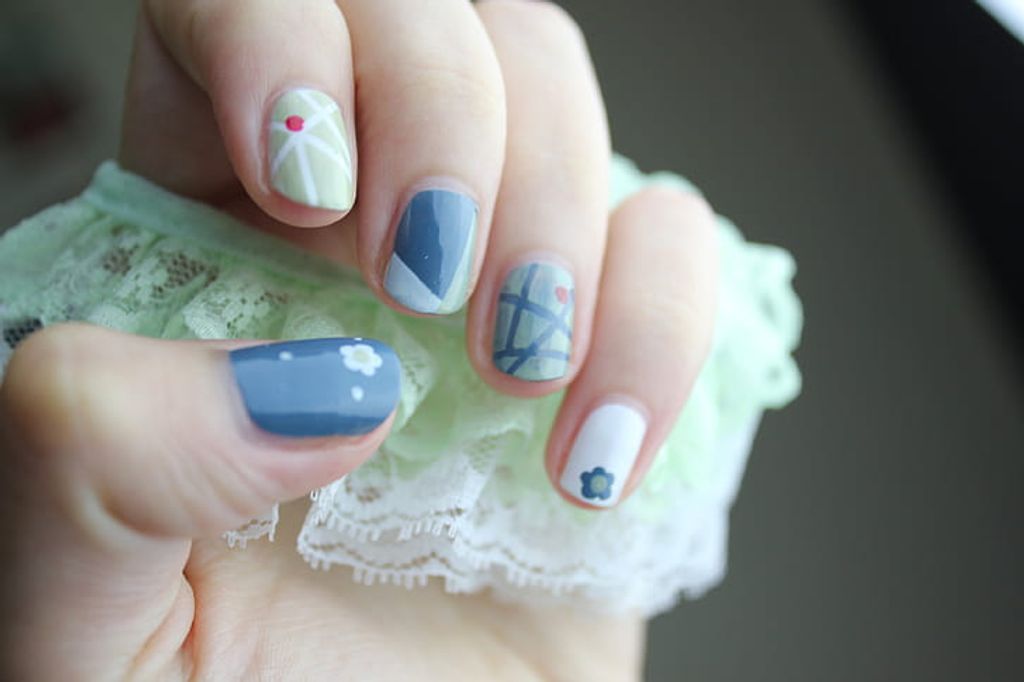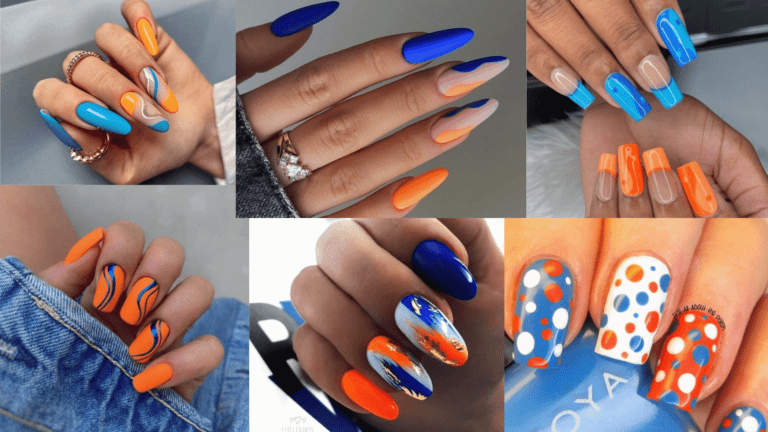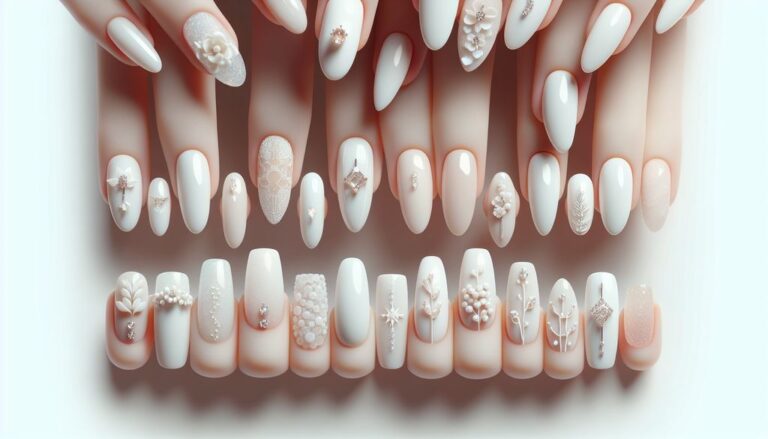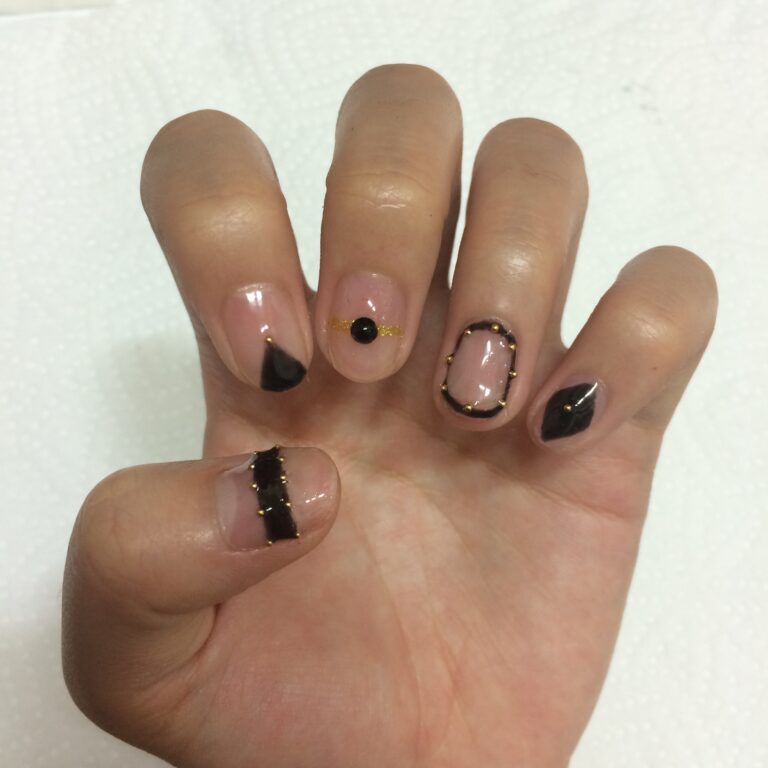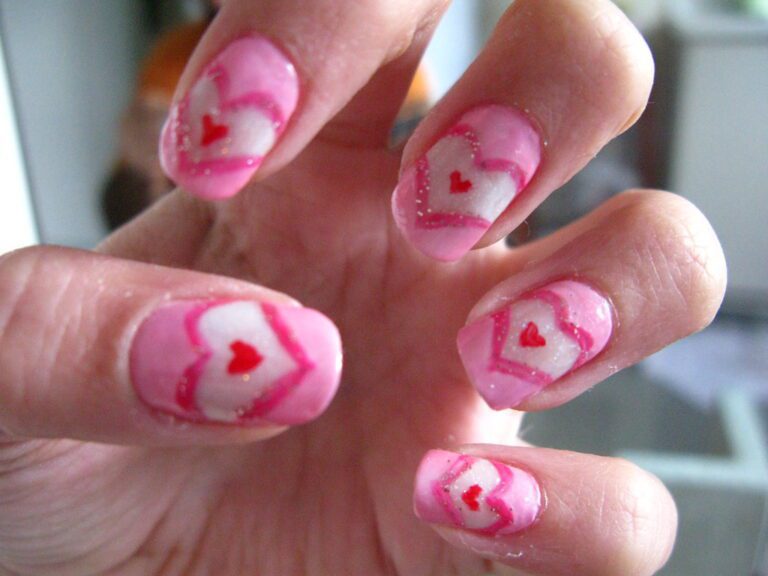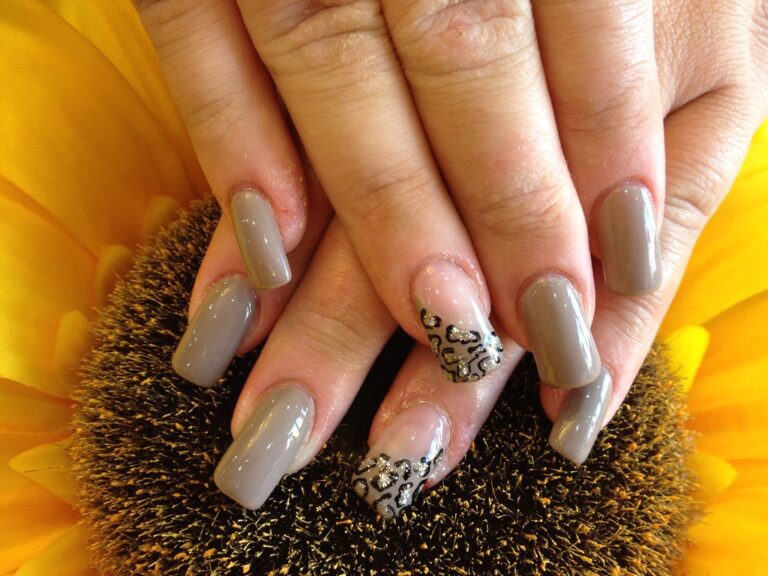“Short Story: Can Nails Be Too Short for Acrylics?”
Deprecated: mb_convert_encoding(): Handling HTML entities via mbstring is deprecated; use htmlspecialchars, htmlentities, or mb_encode_numericentity/mb_decode_numericentity instead in /home/u654140373/domains/nailinspire.com/public_html/wp-content/plugins/kadence-pro/dist/elements/elements-init.php on line 1267
Deprecated: Function utf8_decode() is deprecated in /home/u654140373/domains/nailinspire.com/public_html/wp-content/plugins/kadence-pro/dist/elements/elements-init.php on line 1275
In the world of nail enhancements, the debate over the suitability of short nails for acrylic application has sparked much discussion. Understanding the intricacies of nail anatomy and the challenges associated with applying acrylics on short nails is essential for both nail technicians and clients. This article delves into the considerations, techniques, and alternatives for short acrylic nails, providing valuable insights for nail enthusiasts and professionals alike.
Key Takeaways
- Proper nail preparation is crucial for successful acrylic application on short nails.
- Gel overlays and dip powder nails are viable alternatives to traditional acrylics for short nails.
- Routine care and maintenance are essential for preserving the integrity of short acrylic nails.
- Adhesion difficulties and potential damage to the nail bed are key challenges when applying acrylics on short nails.
- Understanding the limitations in design and shape for short acrylic nails is important for managing client expectations.
Understanding Nail Anatomy and Acrylic Application

The Structure of Natural Nails
The natural nail, also known as the onychium, is a complex structure composed of several parts, each playing a crucial role in nail health and aesthetics. The nail plate is the hard, translucent part that we commonly refer to as the nail. It’s made of a protein called keratin, which is also found in hair and skin. The nail plate sits on the nail bed, a layer of skin that supplies the nail with nutrients and gives it a pinkish color due to the underlying blood vessels.
Tip: Consistent care and maintenance of the natural nail are essential for a strong foundation, which is vital for acrylic application.
Beneath the nail plate lies the nail matrix, an area where new nail cells are generated. As these cells grow and harden, they push the older cells forward, causing the nail to grow. The cuticle is the skin that overlaps the nail plate at the base, acting as a protective barrier against infections. Understanding this structure is key when considering acrylic applications, as the integrity of these components must be maintained to prevent damage.
How Acrylics Adhere to the Nail Bed
The process of applying acrylics to the nail bed is a meticulous one that requires a clean and slightly roughened surface for optimal adhesion. Acrylics are composed of a liquid monomer and a powder polymer that, when mixed, create a malleable bead. This bead is then shaped onto the natural nail and the tip, forming a strong bond as it cures and hardens.
- Proper nail preparation is crucial, involving steps such as cleaning, buffing, and dehydrating the nail plate.
- A nail primer is often applied to enhance the grip of the acrylic to the nail surface.
Tip: Always ensure the nail bed is free from oils and moisture before applying acrylics to prevent lifting and promote longevity.
While the chemistry behind acrylics allows them to adhere well to the natural nail, the length of the nail can affect the overall durability of the enhancement. Short nails may provide less surface area for the product to cling to, which is why proper preparation and technique are especially important in these cases.
Minimum Nail Length for Acrylics
The question of whether nails can be too short for acrylics often arises among enthusiasts and professionals alike. While there is no strict minimum nail length for acrylic application, a small amount of free edge—the part of the nail that extends beyond the fingertip—is generally recommended. This allows for better adhesion of the acrylic product and provides a more secure base for the enhancement.
- A sliver of free edge (approximately 1-2 millimeters) is often sufficient.
- Nails shorter than this may require additional techniques for proper application.
- Extremely short or bitten nails might pose a challenge but are not impossible to work with.
Tip: If your nails are too short, consider waiting for them to grow out slightly before opting for acrylics to ensure better results and easier maintenance.
Challenges of Applying Acrylics on Short Nails

Adhesion Difficulties with Short Nails
Adhesion difficulties with short nails can pose a challenge when applying acrylics. The natural nail surface may not provide enough area for the acrylic to adhere properly, leading to potential lifting and breakage. Proper nail preparation is crucial to address this issue, ensuring that the acrylic application is secure and long-lasting. Additionally, using strengthening treatments before acrylics can help improve adhesion and durability.
Potential Damage to the Nail Bed
Applying acrylics to nails that are too short can lead to a higher risk of nail bed damage. This is because the process often involves roughening the nail surface to ensure the acrylic adheres properly. On short nails, there’s less surface area to work with, which can result in excessive filing down of the natural nail.
- Over-filing can weaken the nail structure, making it more susceptible to breaks and infections. Additionally, if the acrylics are not applied or removed correctly, it can lead to lifting and subsequent moisture trapping, which promotes fungal or bacterial growth.
Here are some potential issues associated with improper acrylic application on short nails:
- Thinning of the natural nail
- Increased risk of nail breakage
- Development of nail infections
Tip: To minimize damage, always seek a professional nail technician who is experienced in working with short nails and can apply acrylics with precision and care.
Limitations in Design and Shape
When working with short nails, the design options are somewhat limited, and achieving intricate shapes may be challenging. However, with the right techniques and creativity, stunning designs can still be achieved. It’s important to consider the natural nail length and shape when planning the design, ensuring that it complements the client’s style and preferences. Additionally, using subtle color gradients and minimalist patterns can enhance the overall look, creating a sophisticated and elegant appearance.
Preparation Techniques for Short Nails

Proper Nail Preparation for Enhancement
Preparing your natural nails for acrylic application is a critical step that should not be overlooked. The process begins with thorough cleaning to remove any oils or residue, which is essential for a strong bond between the acrylic and your natural nails. Nail Primer is then applied to enhance this bonding and ensure longevity of the acrylic nails.
Choosing the correct size for nail tips is also crucial. Start with the smallest finger and work your way up, placing the pre-sized tips in order. Disinfecting your nails is a must to prevent any potential infections. Here’s a simple list to follow for nail preparation:
- Clean nails with a professional nail polish remover, like 100% Pure Acetone.
- Apply Nail Primer to each nail.
- Choose and size nail tips correctly.
- Disinfect nails before proceeding with acrylic application.
Tip: Always handle your nails with care during preparation to avoid any damage to the nail bed, which could affect the final outcome of your acrylic nails.
Using Nail Tips vs. Sculpting Forms
When it comes to enhancing short nails, nail technicians often choose between nail tips and sculpting forms. Nail tips are pre-shaped plastic pieces that adhere to the natural nail to add length. They are a popular choice for those with shorter nails as they provide an instant length and a base for the acrylic to overlay.
Sculpting forms, on the other hand, are used to mold and shape the acrylic directly on the nail, allowing for a more customized fit. This method can be particularly beneficial for those with very short nails, as it does not require any natural nail to anchor onto.
- Choosing between the two methods depends on the client’s natural nail condition and the desired outcome. Here’s a quick comparison:
- Nail Tips: Easier to apply, less time-consuming, ideal for moderate short nails.
- Sculpting Forms: More customizable, better for extremely short nails, requires more skill.
Tip: Always ensure the natural nail is prepped correctly before applying any enhancements to prevent damage and lifting.
Strengthening Treatments Before Acrylics
Before the application of acrylics, it’s crucial to consider the health and strength of the natural nails, especially when they are short. Strengthening treatments can play a vital role in preparing the nails for the added weight and stress of acrylics. These treatments often include conditioners and hardeners that penetrate the nail, providing reinforcement from within.
A common regimen for nail strengthening might include the application of a keratin-based cream or serum, which can help to repair and fortify the nail structure. Additionally, using a nail strengthener that contains essential vitamins and minerals can promote healthier nail growth, making them more suitable for acrylic application.
Remember: Consistency is key when it comes to strengthening treatments. Apply the product according to the manufacturer’s instructions, usually once a day, and allow sufficient time for the nails to absorb the benefits before proceeding with acrylics.
For those with particularly brittle or damaged nails, a more intensive treatment plan may be necessary. Consulting with a professional nail technician or dermatologist can provide personalized advice tailored to your nail’s specific needs.
Maintenance and Aftercare for Short Acrylic Nails

Routine Care for Acrylic Nails
After getting acrylic nails, it’s important to establish a [nail care routine](https://lifestyledbliss.com/blogs/short-acrylic-nails-a-trendy-twist-on-classic-elegance/) that includes gently filing the edges and keeping the underside of your short acrylic nails clean to prevent damage. Additionally, avoid exposing them to water for extended periods, especially warm or salt water. Using gloves while showering can help protect the acrylic nails from water exposure. Regular maintenance and care are essential for preserving the beauty and longevity of your acrylic nails.
Managing Breakage and Lifting
Managing breakage and lifting of acrylic nails, especially when they are short, requires a diligent care routine. Breakage often occurs due to excessive force or improper nail use. To prevent this, it’s essential to treat your acrylic nails with the same care as you would your natural nails. Avoid using your nails as tools to open packages or pry objects, as this can lead to lifting and subsequent breakage.
Regular maintenance is key to preventing lifting. This includes:
- Keeping the nail and cuticle area clean and dry.
- Applying cuticle oil to nourish the nails and promote adhesion.
- Scheduling regular fill appointments to address any gaps that could lead to lifting.
Tip: If you notice any lifting, do not attempt to fix it yourself. Contact your nail technician to avoid further damage to the nail bed.
It’s also important to listen to your nails. If you experience repeated issues, consider taking a break from enhancements to allow your natural nails to recover and strengthen. Remember, the health of your nails should always come first.
When to Get a Fill or Redo
Acrylic nails require regular maintenance to keep them looking their best. Typically, a fill is needed every two to three weeks to address the natural nail growth and to maintain the integrity of the acrylic overlay. During a fill, the regrowth area at the base of the nails is filled in with acrylic to restore a seamless appearance.
Timing for a fill can vary based on individual nail growth rates and the level of activity that the nails are subjected to. It’s important to monitor for any signs of lifting or breakage between appointments. If you notice any lifting, it’s crucial to get a fill or redo promptly to prevent moisture from getting trapped and causing potential infections.
Tip: To extend the life of your acrylics, avoid exposing your nails to harsh chemicals and wear gloves when performing tasks that could cause damage.
If you’re unsure about when to schedule your next appointment, consult with your nail technician who can provide personalized advice based on the condition of your acrylics and your natural nails.
Alternatives to Acrylics for Short Nails

Gel Overlays: A Gentler Option
Gel overlays are a popular choice for those with short nails, offering a resilient and natural-looking finish. This technique uses a hard and durable gel product to cover the natural nails without adding length. It provides added strength and durability, making it a gentler option for short nails. Gel overlays are also known for their ability to create a smooth and glossy appearance, enhancing the natural beauty of short nails.
Dip Powder Nails for Added Strength
Dip powder nails offer a robust alternative to traditional acrylics, especially for those with short nails seeking added strength. Unlike acrylics, dip powder does not require UV light to set, making it a convenient option that also reduces exposure to UV rays. The application process involves dipping the nails into a pigmented powder, followed by a sealant, which results in a durable, chip-resistant finish.
Longevity is a key advantage of dip powder nails. Many users report their manicures lasting from 3-5 weeks, maintaining a pristine look without the frequent chipping associated with other nail enhancements. This extended wear time is particularly beneficial for individuals with active lifestyles or those who prefer low-maintenance nail solutions.
For best results, it’s crucial to start with a bonding clear dip powder as the foundation. This initial layer helps to prevent lifting and creates a stronger base for subsequent color layers. Here are some tips for maintaining your dip powder nails:
- Avoid prolonged water exposure to prevent lifting.
- Gently file any rough edges to maintain a smooth finish.
- Schedule regular touch-ups to keep your nails looking their best.
Natural Nail Enhancements and Growth Serums
For individuals with short nails seeking alternatives to acrylics, natural nail enhancements and growth serums offer a promising solution. These products are designed to fortify and extend the natural nails without the need for artificial extensions. Growth serums, in particular, are enriched with nutrients like biotin, keratin, and various oils that can help improve the nail’s condition over time.
Growth serums work by penetrating the nail bed and providing the essential vitamins and minerals needed for nail strength and growth. Regular application as directed can lead to noticeable improvements in the nail’s resilience and length. It’s important to select a serum that complements your nail’s needs, as some may focus more on hydration while others prioritize strengthening.
Tip: Consistency is key when using growth serums. Apply the product as part of your daily routine to achieve the best results.
While natural nail enhancements and serums can be effective, they are not instant solutions. Patience and regular care are essential for seeing a significant change in nail health and length. Here’s a simple routine to incorporate these treatments into your nail care regimen:
- Start with clean, dry nails.
- Apply the growth serum to the nails and cuticles.
- Massage gently to ensure absorption.
- Allow time for the serum to fully penetrate before engaging in activities that may wash it away.
If you’re looking for alternatives to acrylics for short nails, you’ve come to the right place. At NAILinspire.com, we understand the struggle of finding the perfect nail art solutions for short nails. Our comprehensive online nail art design library offers a wide range of options, from gel polish to nail wraps, to help you achieve stunning nail designs without the need for acrylics. Whether you’re a nail art enthusiast or a professional nail technician, our collection of short-nail-friendly products and techniques will inspire you to create beautiful nail art that suits your style. Visit NAILinspire.com today and explore the endless possibilities for short nails!
Frequently Asked Questions
Can short nails handle acrylics?
Yes, but there are limitations in design and shape due to the nail length.
Will acrylics damage my natural nails?
When applied and removed properly, acrylics should not cause damage to the natural nails.
How often should acrylic nails be filled?
Acrylic nails should be filled every 2-3 weeks to maintain their appearance and strength.
Can I switch from acrylics to gel overlays?
Yes, you can transition from acrylics to gel overlays for a gentler nail enhancement option.
Do short acrylic nails require special aftercare?
Short acrylic nails should be cared for like regular acrylic nails, with attention to managing breakage and lifting.
What are the alternatives to acrylics for short nails?
Alternatives include gel overlays, dip powder nails, and natural nail enhancements with growth serums.

